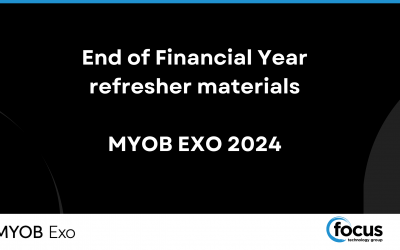
Following on from our recent EXO User Community Workshop I wanted to recap lessons learnt from many years working with the barcode & standards evangelists, GS1, and roles with software development organisations like Focus.
Written by Bruce Pollock
As the GS1 Territory Manager for 6 years I had the privilege of visiting many member sites. Typically, they would be suppliers to large retailers. Retailers like Foodstuffs, Progressive Enterprises, Mitre10 and Farmlands. The adoption of standards for Barcodes and scanners has grown and for good reason. It simplifies commerce and the exchange of goods or services.
Sectors that adopted barcodes early did so primarily for point of sale (also point of delivery), to answer the question, what did we just sell? So driven by point of sale requirements suppliers to those retailers either added EAN13 barcodes or the manufacturers did. In doing so they become members of the global GS1 entity.
It’s fair to say most GS1 members haven’t unlocked the other benefits of their membership. What I’m focusing on here is around supply chain automation. To be specific I’m talking about enabling your software investment (MYOB EXO) to work for you in your supply chain. By adopting more of the standards available you will unlock more of the benefits. Most businesses I work with focus on financial transactions only with their accounting or ERP solution missing the supply chain automation advantages. Linking financials and supply chain via automation seemed to be a bridge too far, I’ll give you an example.
One site I visited many years ago was a pie factory. They made pies, a lot of pies. So many in fact the owner was too busy to talk about anything beyond his next production run. He’s no longer in business. I have no insight as to why his business failed, maybe he just burnt himself out trying to do it all manually. I do know he purchased a lot of stock and his warehouse approach was based on the old hand, pen and paper. So no scanning at all, although ironically he had to put barcodes on his packaged pies for his clients and his incoming raw material was barcoded. An easy connection one would think however without the right underpinning software, a desire to improve and an insight into what is possible, it was all a bridge to far.
Some of our clients are still yet to embrace modern tools such as scanners. Some business owners acknowledge this as their Achilles Heel as they recognise capital can be reassigned if they have this part of their business optimised. Certainly conversations at the recent MYOB EXO user group workshop reflect this and encouragingly the desire to change lies in wait for the visionary. Business owners know they need to improve their supply chain for traceability, profitability and sanity but where and how to start is the missing piece.
So what’s changed?
What I’m seeing now is functionality that once was the domain of the most expensive enterprise resource planning (ERP) applications now available within a subscription model that’s affordable for smaller businesses. Applications that are now sold as a cloud service have certainly changed the game. So in essence the price of entry has reduced.
You no longer have to be a very large enterprise to be able to afford sophisticated tools for supply chain automation. Now businesses can scan and track inwards and outwards goods plus all the internal movements in between. For example, we are currently evaluating a 3rd party solution that uses low cost android based phones connecting to 2D scanners. No longer the ~$4000 proprietary devices of old.
We have also seen very sophisticated stock analysis and forecasting tools that tells you what and when to order all based on pre-determined fill and supply rates using historic data integrated to MYOB EXO in a matter of hours. The investment being in the hundreds not tens of thousands of dollars.
So the missing gap and getting back to supply chain standards, there are low cost solutions available now for a lot less than you might think.
The next big win for some of our clients and GS1 members alike will be around how can we achieve supply chain automation for our warehouses and distribution networks using global standards and when we do embrace this, how do we start tackling the issue?
Businesses who are interested in getting a greater return from their MYOB EXO investment will get value from modern low cost solutions that are available through Focus. I’m keen to discuss your next steps.


